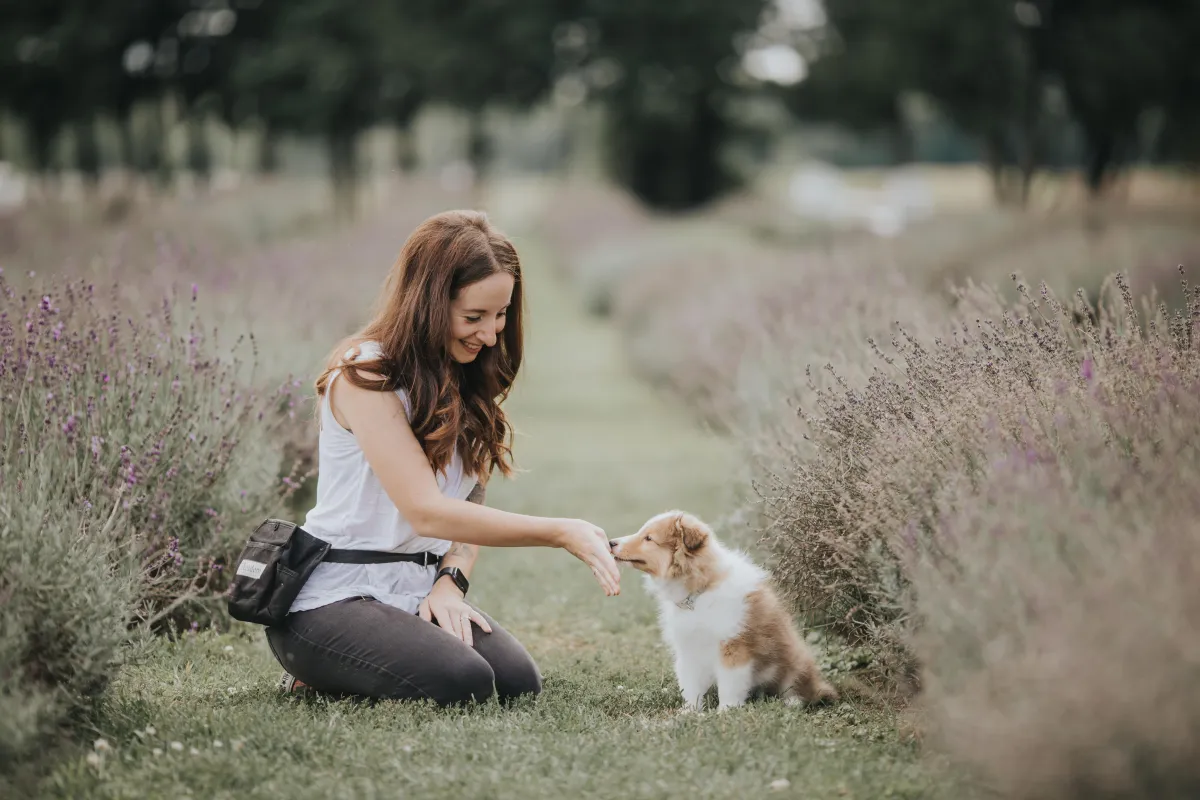Dog Inspired Blog
Guidance, Tips & Inspiration for Every Step of Your Dog’s Journey.

The Do's and Don'ts of Crate Training Your Puppy
“Always end crate training on a positive note!” - Katherine Davidson
Introduction:
Crate training is a valuable tool for both puppies and their owners. When done correctly, it provides a safe and comfortable space for your puppy while aiding in house training and preventing destructive behaviours. However, crate training should never involve the "cry it out" method, which can cause undue stress and anxiety for your furry friend.
In this guide, we'll explore the do's and don'ts of crate training using positive reinforcement methods, ensuring a positive experience for both you and your puppy.

The Do's:
Make the Crate Inviting: Introduce your puppy to the crate gradually. Place soft bedding inside and enticing toys or treats to encourage your puppy to explore the space willingly.
Associate the Crate with Positive Experiences: Offer meals and treats inside the crate, creating positive associations with being in the crate. You can also provide special toys or chews that your puppy only receives when in the crate, like a stuffed kong or bully stick!
Teach to go in on cue: Introduce a cue, such as "crate" or "bed," when encouraging your puppy to enter the crate. Pair the command with treats and praise to reinforce the behaviour.
Start with Short Sessions: Begin crate training with short periods of time and gradually increase the duration as your puppy becomes more comfortable. This helps prevent your puppy from feeling overwhelmed or anxious. The duration will be determined by your puppy. Start with just a few seconds with a constant flow of treats then opening the door so they can come out. Repeat and increase the duration.
Don't wait for Whining or Barking: If you always wait for when puppy whines or barks to open the crate door, a few things might happen. One is that your puppy might learn to whine to get out, an awful habit to break. Second is that your puppy might create a negative association where they are always pushed to discomfort before being let out.
Instead, quit while you are ahead! End on a positive note! Keep sessions short at first and be sure you (and your puppy!) win each time. It might look like 2-3 seconds in the crate but it will quickly increase.Provide Mental Stimulation: Offer interactive toys or puzzle feeders inside the crate to keep your puppy mentally stimulated and entertained during crate time.
The Don'ts:
Don't Use the Crate as Punishment: The crate should never be associated with punishment, like yelling or shoving them in their crate.
Time-outs or "take a break" is not bad and can be used to encourage your puppy to settle down and relax when they are over stimulated. Puppy should be encouraged or cued to enter their crate. If they are not there yet, the crate should be avoided.Avoid Leaving Your Puppy Alone for Extended Periods: Puppies have limited bladder control and should not be left in the crate for extended periods, especially during the early stages of crate training.
If you use the crate for when you are gone, be sure to work your puppy up to that amount of time over a few weeks (ideally!). Included puppy pee breaks by coming home at lunch, having a friend come or hiring a dog walker to break up puppy's day.Don't Force Your Puppy into the Crate: Forcing your puppy into the crate can create fear and resistance. Instead, encourage your puppy to enter the crate voluntarily using positive reinforcement techniques.
Avoid Using the Crate for Excessive Confinement: While crate training is beneficial, it's essential to provide ample opportunities for your puppy to exercise and interact with you outside of the crate.
I know puppies like to chew, dig and can sometimes wreck havoc but they are learning what it means to live in your home. Puppy-proofing, enrichment and exercise is the best course of action and use the crate only when necessary.Don't React to Whining or Barking with Anger: Responding to whining or barking with anger or frustration can escalate the situation and increase your puppy's stress levels. Stay calm and use positive reinforcement to encourage quiet behaviour.
Crate training can be a positive and effective method for teaching your puppy good behaviours, preventing unwanted behaviours and providing them with a safe space of their own. By following the do's and don'ts outlined in this guide, you can ensure that crate training is a positive experience for your puppy, free of stress and anxiety. Remember to be patient, consistent, and always use positive reinforcement techniques to encourage desired behaviours. With time and practice, your puppy will learn to love their crate as a cozy retreat and a valuable training tool.

Let's Work Together
Whether you’re just bringing home a puppy or you’ve already started your service dog training journey, Dog Inspired is here to help you every step of the way.
Service Areas: Deux-Montagnes, St-Eustache, Laval, Montreal
